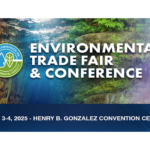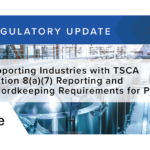
If you’re planning on undertaking any development projects near water bodies in San Antonio, Texas, it’s important to understand the Section 404 permit process. This article will guide you through the requirements, application process, common challenges, and tips for a successful Section 404 permit application.
Understanding the Section 404 Permit
The Section 404 permit, under the Clean Water Act, is essential for any project that involves dredging or filling in waters of the United States, including wetlands. It is issued by the U.S. Army Corps of Engineers (USACE) to ensure that such projects do not have significant adverse impacts on the environment.
The Importance of Section 404 Permit
The Section 404 permit is vital for protecting water bodies and wetlands from degradation by regulating the placement of dredged or fill material. It helps maintain the ecological balance, water quality, and valuable habitat for wildlife, while also considering the socioeconomic benefits of the proposed projects.
Key Components of Section 404 Permit
A Section 404 permit application typically includes plans outlining the project purpose, design, and potential impacts. The USACE evaluates the environmental consequences and determines if measures can be implemented to mitigate adverse effects.
The permit often requires compensatory mitigation to offset unavoidable environmental impacts. This may involve restoring or creating wetlands elsewhere, enhancing existing habitats, or providing long-term conservation easements.
Furthermore, the Section 404 permit process involves consultation with various federal and state agencies, tribal governments, and the public to gather input on the proposed project’s potential impacts. This collaborative approach ensures that all stakeholders have the opportunity to voice their concerns and provide valuable insights into the decision-making process.
Environmental Benefits of Section 404 Permit
By requiring thorough environmental assessments and mitigation measures, the Section 404 permit helps prevent the loss of wetlands and other critical aquatic habitats. These habitats play a crucial role in supporting biodiversity, filtering pollutants, controlling floods, and providing recreational opportunities for communities.
The Process of Obtaining a Section 404 Permit in San Antonio
Pre-application Consultation
Prior to submitting the Section 404 permit application, it’s advisable to consult with the USACE and other relevant agencies to understand the project’s requirements and potential concerns. These consultations can help identify any modifications needed in the project design to minimize impacts.
During these consultations, experts from the USACE may provide valuable insights and guidance on navigating the complex regulatory landscape. They can offer suggestions on alternative approaches or technologies that could enhance the project’s environmental sustainability.
Furthermore, engaging early with stakeholders, such as local communities and environmental organizations, can increase support and reduce potential conflicts during the permitting process. These stakeholders can provide valuable input on the project’s potential impacts and suggest ways to mitigate them.
Application Submission and Review
The application submission requires comprehensive documentation, including project plans, site maps, environmental assessments, and details of proposed mitigation measures. The USACE conducts a thorough review of the application, evaluating factors such as impacts on water quality, fish and wildlife, hydrology, and cultural resources.
During the review process, the USACE may request additional information or recommend changes to the project to ensure compliance with regulations. It is important to address any concerns promptly and provide the requested information to avoid delays.
Additionally, the USACE may collaborate with other agencies, such as the Environmental Protection Agency (EPA) or the Fish and Wildlife Service (FWS), to gather their expertise and perspectives on the project’s potential impacts. This collaborative approach ensures a comprehensive evaluation of the project’s environmental implications.
Post-permit Compliance and Monitoring
Once the Section 404 permit is issued, project developers must adhere to the conditions specified in the permit. Compliance often includes regular reporting and monitoring of water quality, wetland functions, and mitigation efforts.
The USACE may conduct inspections to ensure ongoing compliance. These inspections serve not only as a means of enforcement but also as an opportunity for project developers to learn and improve their environmental practices.
Any changes to the project plans or unforeseen environmental impacts must be promptly reported to the USACE for review and approval. This proactive approach allows the USACE to assess the potential implications of the changes and provide guidance on necessary modifications or additional mitigation measures.
Common Challenges in Securing a Section 404 Permit
Navigating Regulatory Requirements
Complying with the extensive regulatory requirements of the Section 404 permit process can be challenging. Understanding the federal, state, and local regulations, as well as agency guidelines, is crucial to ensure full compliance.
It’s recommended to engage experienced consultants or environmental professionals who can assist in navigating the complexities of the permitting process and help develop feasible project designs that meet regulatory standards.
Addressing Environmental Concerns
Evaluating potential environmental impacts and developing appropriate mitigation measures can be complex. The Section 404 permit process requires careful consideration of impacts on water quality, hydrology, wildlife, and cultural resources.
Engaging with environmental agencies, conducting thorough assessments, and incorporating feedback from stakeholders can help address environmental concerns and ensure the success of the permit application.
Tips for a Successful Section 404 Permit Application
Preparing Comprehensive Documentation
Submitting a well-documented application is crucial for a successful Section 404 permit. Clearly present project plans, environmental assessments, and proposed mitigation measures. Providing detailed information helps the reviewing agencies understand the project’s potential impacts and intended mitigation efforts.
Ensure that all required forms and documents are completed accurately and in compliance with the USACE guidelines.
Engaging with Local Authorities and Communities
Engaging with local authorities and communities can contribute significantly to a successful permit application. Seek input from local stakeholders, address concerns, and incorporate suggestions into the project plans when feasible.
Regular communication with the community throughout the process fosters trust and understanding, minimizing conflicts and delays.
Frequently Asked Questions about Section 404 Permit in San Antonio
Renewal and Transfer of Section 404 Permit
Section 404 permits generally have a specified time frame of validity. If the project extends beyond the permit’s expiration, developers need to apply for a permit renewal. The renewal process typically requires an assessment of the project’s continued compliance and any necessary modifications due to changing circumstances.
Transferring a Section 404 permit to another party typically involves submitting documentation showing the transferee’s ability to comply with the permit conditions and assuming liability for its obligations.
Penalties for Non-compliance with Section 404 Permit Regulations
Non-compliance with Section 404 permit regulations can result in penalties ranging from fines to legal consequences. The USACE has the authority to issue violation notices, stop-work orders, and pursue legal actions to enforce compliance.
It is essential to ensure ongoing compliance with the permit’s conditions and promptly address any changes or issues that may arise during the project’s implementation.
In conclusion, obtaining a Section 404 permit in San Antonio, Texas, is crucial for development projects that involve dredging or filling in water bodies or wetlands. By understanding the permit process, engaging with stakeholders, addressing environmental concerns, and following the tips provided, project developers can increase their chances of successfully navigating the permitting process and ensuring compliance with all regulations. Always consult with the relevant authorities and seek professional assistance for a smooth permit application experience.
As you navigate the complexities of the Section 404 permit process in San Antonio, TX, partnering with a seasoned environmental consulting firm can make all the difference. ESE Partners is dedicated to responsibly moving your business forward with expert environmental problem-solving. Our team’s proficiency in water compliance, including stormwater permitting and wastewater reporting, positions us as your premier partner in ensuring adherence to all regulatory requirements. With significant changes on the horizon for the USACE review process in the Galveston County District, now is the time to secure professional guidance. Request A Proposal from ESE Partners today, and let us provide you with innovative, sustainable solutions for your environmental challenges.








